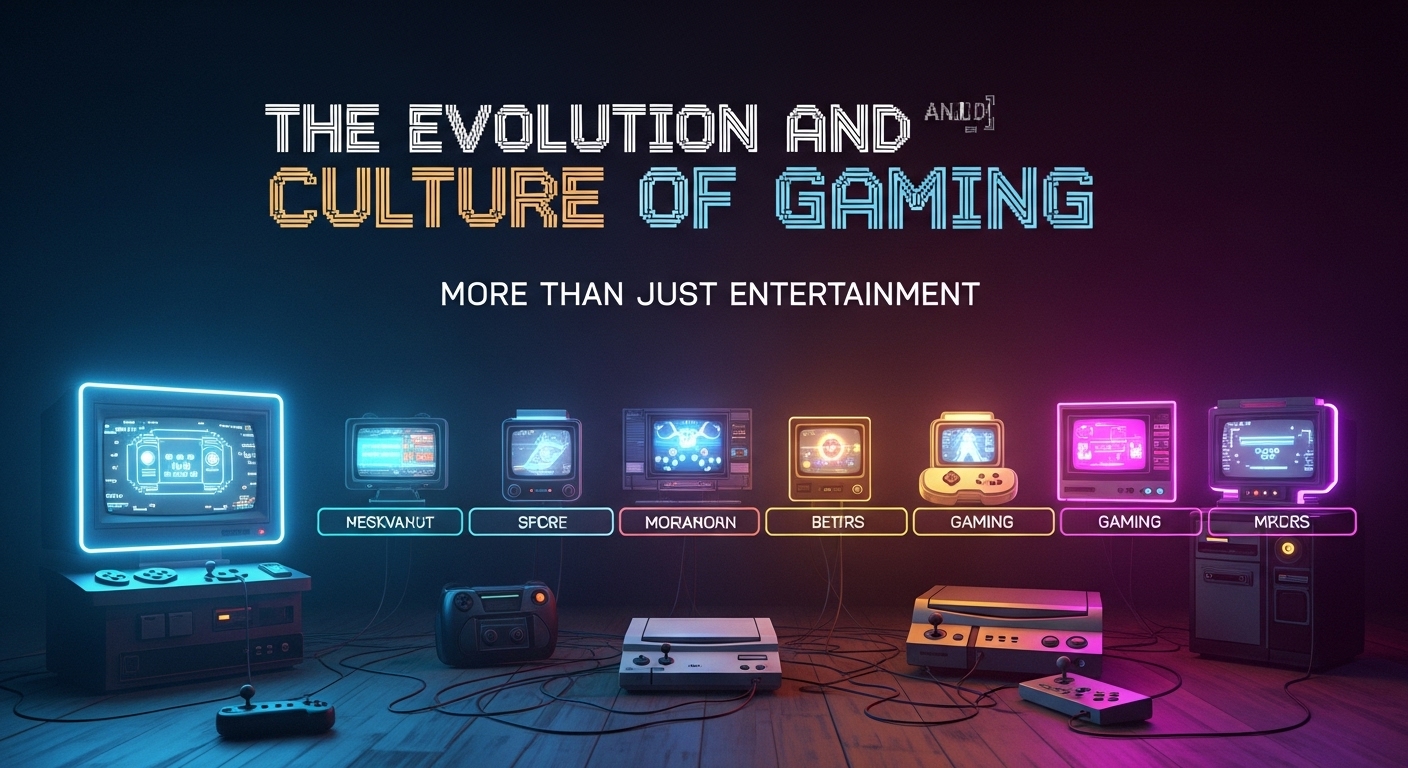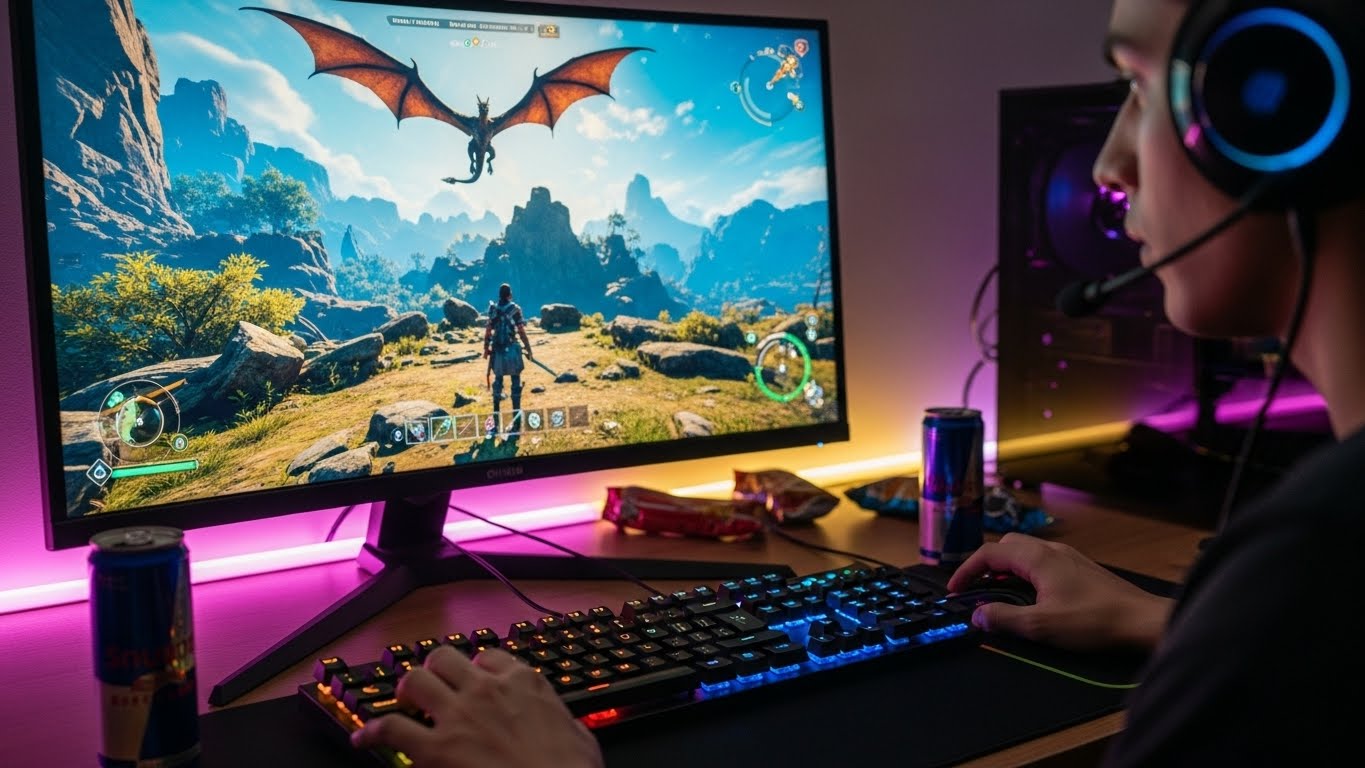Gaming has transformed remarkably over the past few decades. From the humble beginnings of pixelated screens and simplistic gameplay to today’s immersive virtual realities and cloud-based multiplayer universes, the evolution of gaming has been nothing short of extraordinary. This blog delves into the various aspects of gaming, exploring its history, technological advancements, cultural impact, and the exciting possibilities that lie ahead.
The Early Days of Gaming
The origins of gaming date back to the 1950s and 1960s, where games were primarily created as experiments on computer systems. Titles like Tennis for Two and Spacewar! laid the foundation for the gaming industry. During this period, games were not commercially available but served as demonstrations of computer capabilities.
The 1970s witnessed a significant shift with the rise of arcade games. The introduction of Pong in 1972 became a cultural phenomenon, drawing crowds to arcades across the globe. These early games were simple yet captivating, relying on intuitive controls and competitive play to engage players. It was during this era that gaming began to take shape as a form of entertainment accessible to the masses.
The Rise of Home Consoles
The late 1970s and early 1980s marked the emergence of home gaming consoles. Companies like Atari and Nintendo revolutionized the way people interacted with games by bringing them into their living rooms. The Atari 2600 became one of the first widely successful home consoles, offering games that could be played without leaving home.
Nintendo’s introduction of the NES (Nintendo Entertainment System) in the mid-1980s further solidified gaming’s presence in households. With iconic titles like Super Mario Bros. and The Legend of Zelda, Nintendo captured the imagination of millions and established characters that remain beloved today. Home consoles allowed players to experience intricate gameplay, storytelling, and interactivity that arcades could not fully provide.
Gaming in the 1990s: The Era of Innovation
The 1990s were characterized by technological leaps and creative exploration in gaming. The transition from 2D to 3D graphics changed the landscape entirely. Games like Super Mario 64 and Tomb Raider showcased fully explorable 3D worlds, setting a new standard for immersion.
During this era, PC gaming also gained significant traction. Titles such as Doom and Warcraft not only pushed the boundaries of graphics and gameplay mechanics but also introduced multiplayer experiences that connected players across the globe. Online gaming, although in its infancy, began to emerge as a powerful force, hinting at the interconnected worlds that modern gamers enjoy today.
The Birth of Multiplayer and Online Communities
As the internet became more accessible in the late 1990s and early 2000s, multiplayer gaming transformed into a social phenomenon. Games like Counter-Strike and World of Warcraft brought together players from different corners of the world, fostering communities and friendships that extended beyond the digital realm.
Online multiplayer games offered a unique blend of competition and collaboration. Players could communicate, strategize, and form alliances in ways previously impossible. The concept of esports also began taking root during this period, laying the groundwork for what would become a billion-dollar industry.
Mobile Gaming: Gaming in Your Pocket
The proliferation of smartphones in the late 2000s ushered in a new era of gaming. Mobile games became a mainstream form of entertainment, reaching audiences who may not have considered traditional gaming. Titles like Angry Birds and Candy Crush demonstrated that engaging gameplay could be simple yet addictive.
Mobile gaming also democratized access to games. With devices that most people already owned, players could enjoy gaming anytime and anywhere. The rise of app stores created an ecosystem where developers could reach millions of users instantly, transforming gaming into an ever-present aspect of daily life.
Virtual Reality and Immersive Experiences
The next frontier of gaming lies in virtual reality (VR) and augmented reality (AR). VR offers fully immersive experiences, allowing players to step into virtual worlds and interact with environments in a way that blurs the line between reality and fantasy. Games like Beat Saber and Half-Life: Alyx showcase the potential of VR, offering experiences that are both physically engaging and visually stunning.
AR, on the other hand, overlays digital elements onto the real world, creating interactive experiences in familiar environments. Games such as Pokémon Go have demonstrated the appeal of AR by combining exploration, social interaction, and gaming in a real-world context. Both VR and AR are pushing the boundaries of what it means to play a game, opening doors to entirely new forms of entertainment.
The Role of Storytelling in Gaming
Gaming is no longer just about mechanics and competition. Storytelling has become a central element of the gaming experience. Narrative-driven games like The Last of Us and Red Dead Redemption demonstrate how games can deliver emotionally resonant stories that rival film and literature.
Players are no longer passive observers; they become active participants in narratives. Choices made during gameplay can influence outcomes, creating personalized stories that resonate with individual players. This interactivity makes gaming a uniquely immersive medium for storytelling, blending art, technology, and human emotion.
Esports: Gaming as a Competitive Sport
Esports has transformed gaming from a hobby into a legitimate competitive pursuit. Professional players, teams, and leagues have emerged, attracting millions of viewers worldwide. Titles like League of Legends, Dota 2, and Call of Duty have become staples of the esports scene, with tournaments offering substantial prize pools and global recognition.
The rise of streaming platforms has also played a pivotal role. Gamers can broadcast their gameplay to millions, fostering a culture of spectatorship and community engagement. Esports has not only legitimized gaming as a career but has also demonstrated its capacity to unite people across cultures through competition and shared experiences.
Gaming Culture and Its Influence
Gaming has developed into a distinct cultural phenomenon with its own language, norms, and communities. Cosplay, fan art, and conventions celebrate gaming as more than entertainment—it is a lifestyle. Memorable characters, soundtracks, and in-game worlds have become part of global pop culture, influencing fashion, music, and storytelling.
Moreover, gaming has also sparked discussions about representation, inclusion, and diversity. Developers and players alike are increasingly advocating for broader representation in games, ensuring that the medium reflects the rich diversity of its audience. This cultural impact underscores gaming’s significance beyond pixels and controllers, highlighting its role as a mirror of society.
The Psychological and Social Aspects of Gaming
Gaming has been studied extensively for its psychological and social impact. It can improve cognitive skills such as problem-solving, spatial awareness, and strategic thinking. Multiplayer games foster teamwork, communication, and leadership, while narrative-driven experiences can cultivate empathy and emotional intelligence.
However, gaming also comes with challenges, including addiction and social isolation for some individuals. Balancing gameplay with real-life responsibilities is essential, and ongoing research aims to understand how gaming can be both beneficial and potentially harmful depending on context and moderation.
Future Trends in Gaming
The future of gaming is poised to be more immersive, interconnected, and accessible than ever before. Cloud gaming promises to eliminate hardware limitations, allowing players to stream high-quality games on a variety of devices. Artificial intelligence will enhance game design, creating dynamic worlds that respond intelligently to player actions.
We can also expect greater integration of VR, AR, and haptic technologies, offering sensory experiences that fully engage the body and mind. Gaming will continue to evolve as both an art form and a social phenomenon, expanding into areas previously unimaginable.
Conclusion: The Enduring Appeal of Gaming
Gaming has come a long way from its early beginnings. What started as simple experiments on primitive computers has evolved into a multi-billion-dollar industry that captivates millions of people worldwide. From home consoles to VR, from casual mobile titles to competitive esports, gaming continues to redefine entertainment, culture, and human connection.
As technology advances and creativity knows no bounds, the world of gaming promises even more extraordinary experiences. It is a medium that continues to inspire, challenge, and entertain, ensuring that its relevance will only grow in the years to come.



